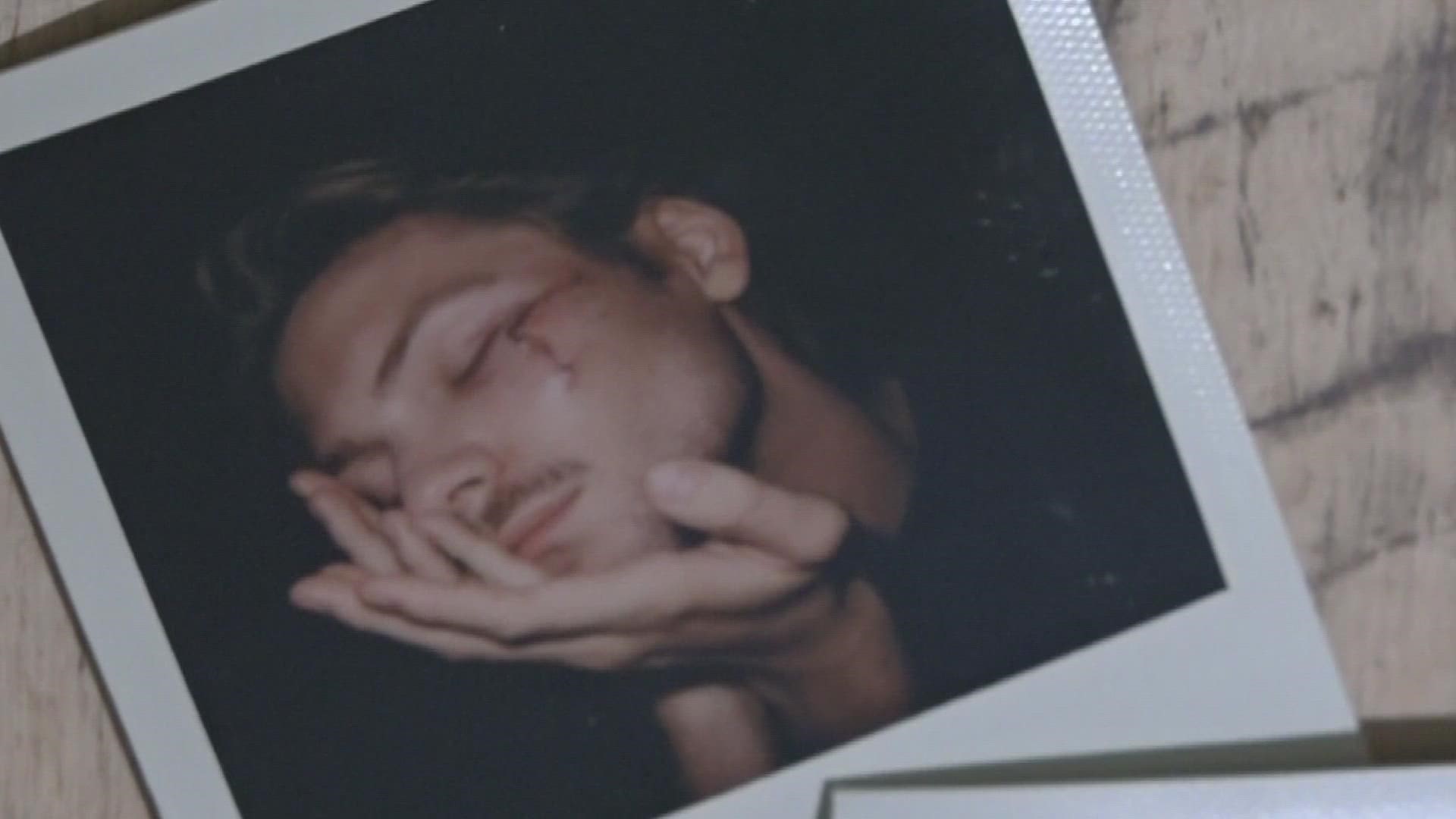ARIZONA, USA — Everett Milloy’s stack of Polaroid pictures is different from what he usually takes as a Photography student at Arizona State University.
He’s a senior, 21 years old, and usually photographs models.
“They were more of a collage than anything,” Milloy says as he flips through the 16 photographs.
Often, he looks through the lens. Lately, he’s been turning the camera on himself.
“I just wanted to make art about it,” Milloy said. “Because that’s like the best way I really know how to cope as a photographer.”
“I wanted one to bandaged, one to be bandaged, one to be off.”
It was about last summer when Milloy noticed a red spot high on his left cheekbone.
He said he had his mom and friends tell him to get it checked out. Recently, getting a biopsy.
“They said, ‘Hey, you have basal cell carcinoma,’” Milloy said.
Milloy was a swimmer for years. Swimming not only on Perry High School’s swim team but swim club too.
“Basically, spray sunscreen on the face, that was it. Hop in the water, immediately comes off. I got really tan,” Milloy said.
Now, what’s left sits right below his goggle line.
“Where it’s like, most reflective, and the sun is most harsh right here,” Milloy said.
Milloy is choosing to capture the journey. Starting first with returning back to Perry High School’s pool to capture a few photos in his old swimsuit, goggles and cap following his biopsy.
He also brought a camera to his Mohs surgery to get the skin cancer removed.
“They really only estimated about a dime-sized, and it came to be about like a half dollar. So a lot larger than expected,” Milloy said.
One of his photographs includes him sitting where the surgery was done, without a bandage, and before having his stitches put in.
“I can I can be in control of what happens to me. And as an artist, like I can make work as I'm going through something life-changing,” Milloy said.
The Polaroid pictures are a collage of him before and after taking the bandage off.
Another, captured on film, is him the day following the surgery, a close-up of his face his “L” shaped stitched scar in black and white.
“I also wanted to really focus on shooting on film because that itself is a direct exposure with light. The way that light interacts with the silver gelatin, and how it almost burns an image into the frame was pretty similar to the way, I felt, like getting sunburned or like, you know, sun exposure was,” Milloy said.
Now, sharing his pictures on social media, hoping that others see beyond the scar, and beyond what’s nearly impossible to escape.
“We have to take care of our bodies. And you know, if you don't, even if you try, like, sometimes these are just the repercussions of the sun,” Milloy said.
You can find information and resources on what to look for and how to protect your family at the Skin Cancer Foundation and Mayo Clinic’s websites.
Up to Speed
Catch up on the latest news and stories on the 12News YouTube channel. Subscribe today.

